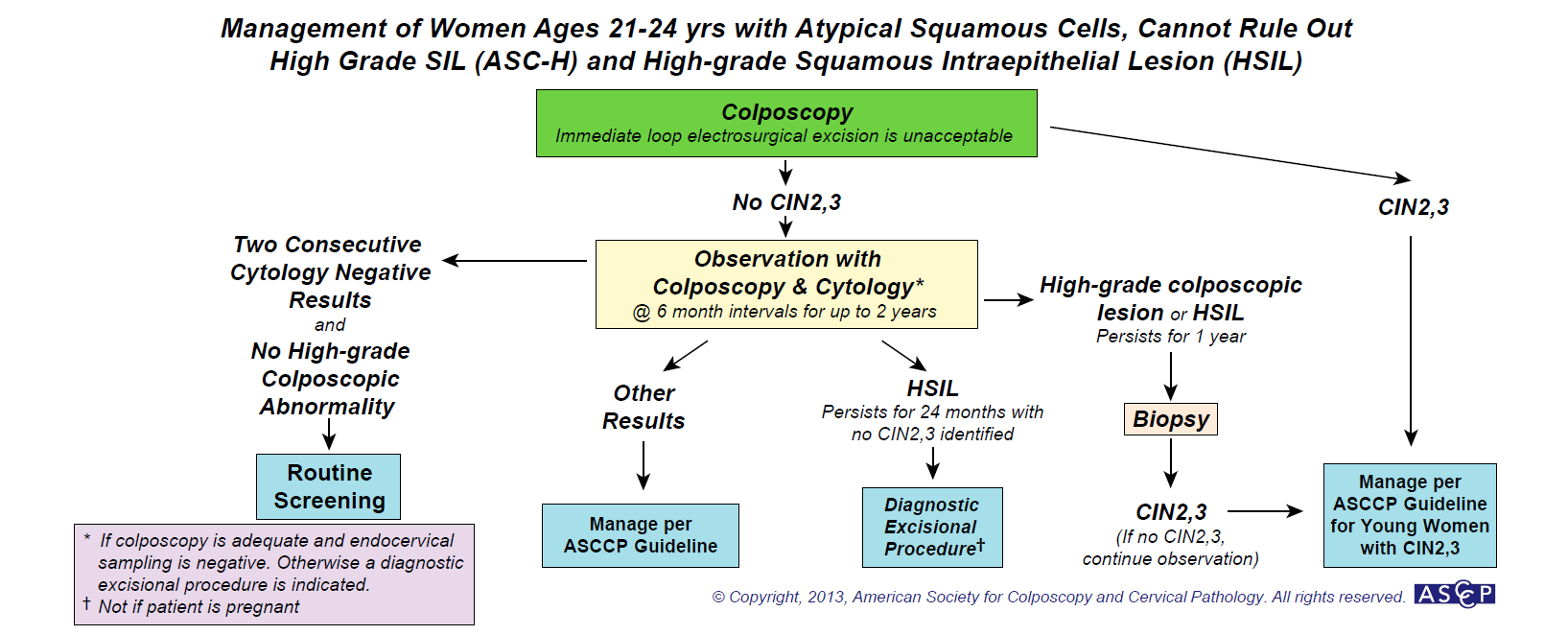Page Contents
OVERVIEW
This page is dedicated to a VERY SPECIFIC TOPIC. Namely discussing the clinical path of a 21-24 year old patient that has a result of HSIL on a routine pap smear. This guide is complementary to the more overarching Guide To Pap Smears.
This page is written to reflect the ASCCP guidelines that are summarized in this document here.
CLINICAL SCENARIO:
Pap smear guidelines can get confusing quickly, and are much easier to navigate when keeping a few major components in mind. These following factors are foundational in dictating our management when thinking about pap smears.
- Pap smear results: In this case, the patient has a result of HSIL on a routine pap smear.
- Age of the patient: In this case, the patient is 21-24 years of age.
- HPV status: In this case, HPV testing is not recommended in this age group, so HPV status is generally not known and does not affect management.
OVERALL ALGORITHM
The fundamental recommendation is that the patient fitting the clinical description above requires a colposcopy however this begs the question, what happens after that? The algorithm below helps to summarize the general clinical course based upon the results of the colposcopy.

INITIAL COLPOSCOPY RESULTS: NO CIN2, 3
The results of the initial colposcopy will dictate the future management. In the setting of the initial colposcopy being negative for CIN (grades 2 and 3 specifically), all patients within this category will be managed with observation, and colposcopy/cytology (ECC) at ~ 6 month intervals (for up to 2 years). The various combinations and permutations at this point can get extenisve, so let us focus on some highlights of how the test results at this juncture influence management.
Two consecutive cytology results AND no high-grade colposcopy findings: under these circumstances patients can return to routine screening practices.
Page Updated: 08.23.2016